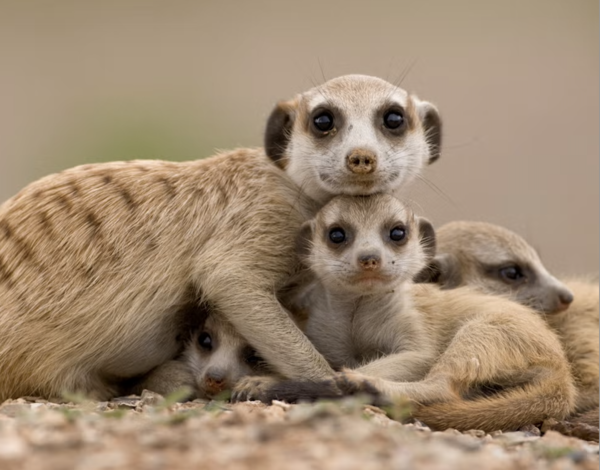Table of Contents
If you’ve ever wondered about the differences between animals and plants, one of the key factors is how they obtain energy. While plants and certain bacteria can produce their own food, animals need to eat other organisms to survive. This raises the important question: Are animals autotrophs or heterotrophs? In this article, we’ll dive deep into this question and explain how animals acquire energy, their role in the food chain, and why they are classified as heterotrophs.

To answer the question of whether animals are autotrophs or heterotrophs, let’s first define these terms:
Autotrophs: These organisms can produce their own food. They are known as "self-feeders" because they make organic substances (like glucose) using inorganic substances (like water and carbon dioxide). The most common autotrophs are plants and some bacteria, which use processes like photosynthesis (in plants) or chemosynthesis (in certain bacteria) to create their own energy.
Heterotrophs: These organisms cannot produce their own food. Instead, they must consume other organisms—whether plants or animals—to obtain nutrients and energy. Animals are the classic example of heterotrophs. They rely on eating other living beings to get the energy needed for survival.
Now that we know what autotrophs and heterotrophs are, let’s look at the key differences:
Energy Source:
Autotrophs: Generate their own food (energy) from sunlight or chemical reactions. Plants use photosynthesis to turn sunlight into energy.
Heterotrophs: Cannot produce their own food. They obtain energy by eating plants, animals, or both.
Energy Production Process:
Autotrophs: Use photosynthesis (in plants) or chemosynthesis (in some bacteria) to convert inorganic materials into organic compounds.
Heterotrophs: Consume food from external sources and rely on digestion and respiration to process food and convert it into usable energy.
Dependence:
Autotrophs: Are self-sufficient in producing their energy.
Heterotrophs: Depend on other organisms for their food.
Animals are considered heterotrophs because they cannot produce their own food. Unlike plants, animals lack the cellular machinery (like chloroplasts) necessary for photosynthesis. This means animals need to obtain their nutrients and energy from external sources—whether that's plants, other animals, or both.
Here’s why animals are heterotrophs:
No Photosynthesis: Animals lack chloroplasts and the ability to absorb sunlight and convert it into energy.
Consumption of Organic Material: Animals consume other organisms, which provide the organic compounds they need to survive.
Animals have different diets, depending on their species, which can be broadly classified into three types based on what they eat:
Herbivores (Plant-eaters): Animals that feed on plants, such as cows, rabbits, and horses. These animals obtain energy from the organic compounds in plants.
Carnivores (Meat-eaters): Animals that eat other animals, like lions, tigers, and eagles. Carnivores are higher up in the food chain and rely on consuming other animals for nutrients and energy.
Omnivores (Plant and Animal-eaters): Animals that eat both plants and animals, such as humans, bears, and pigs. These animals are flexible in their diet and can derive energy from a variety of sources.
Animals play a critical role in the food chain of ecosystems. They are usually consumers, which means they rely on other organisms for food. The food chain typically includes several levels:
Producers (Autotrophs): These are typically plants and algae, which create their own food through photosynthesis.
Primary Consumers (Herbivores): Animals that eat plants. For example, a rabbit that eats grass.
Secondary Consumers (Carnivores): Animals that eat herbivores. For example, a fox that preys on rabbits.
Tertiary Consumers (Top Carnivores): Animals that eat other carnivores. For example, an eagle that hunts smaller carnivores.
At every level, energy is transferred from one organism to another, and animals are a key part of this process. They consume lower trophic levels and are consumed by higher-level predators.
Animals acquire energy through two primary processes: digestion and respiration.
Digestion: When animals eat, they break down food in their digestive systems. The process of digestion involves converting complex food into simpler molecules that can be absorbed into the bloodstream and transported to cells.
Respiration: Once absorbed, the food molecules (usually glucose) are processed in cells through cellular respiration. This is the process where glucose is broken down to release ATP (adenosine triphosphate), which cells use as a form of energy.
This system of digestion and respiration is how animals convert the food they eat into the energy needed for growth, movement, and other biological functions.
Different animals have different nutritional requirements, depending on their diet, size, and metabolic needs. These requirements generally include:
Proteins: Essential for tissue growth and repair.
Carbohydrates: Provide quick energy.
Fats: Store energy for later use.
Vitamins and Minerals: Help regulate body processes and maintain health.
Animals convert the food they consume into energy through metabolism, which is a combination of chemical reactions that occur within cells to maintain life.
To wrap things up, animals are heterotrophs because they rely on consuming other organisms to obtain energy and nutrients. Unlike autotrophs (like plants) that can make their own food, animals depend on external sources for survival. They play a crucial role in the food chain, with different types of animals fulfilling roles as herbivores, carnivores, and omnivores.
Understanding the way animals get their energy through digestion and respiration highlights how interconnected ecosystems are. Animals’ roles as consumers make them essential to maintaining the balance of energy flow in nature. If you're ever wondering why animals can't just "make their own food," it's because they are not equipped with the ability to perform photosynthesis—something only autotrophs can do!
animal tags: heterotrophs
We created this article in conjunction with AI technology, then made sure it was fact-checked and edited by a Animals Top editor.